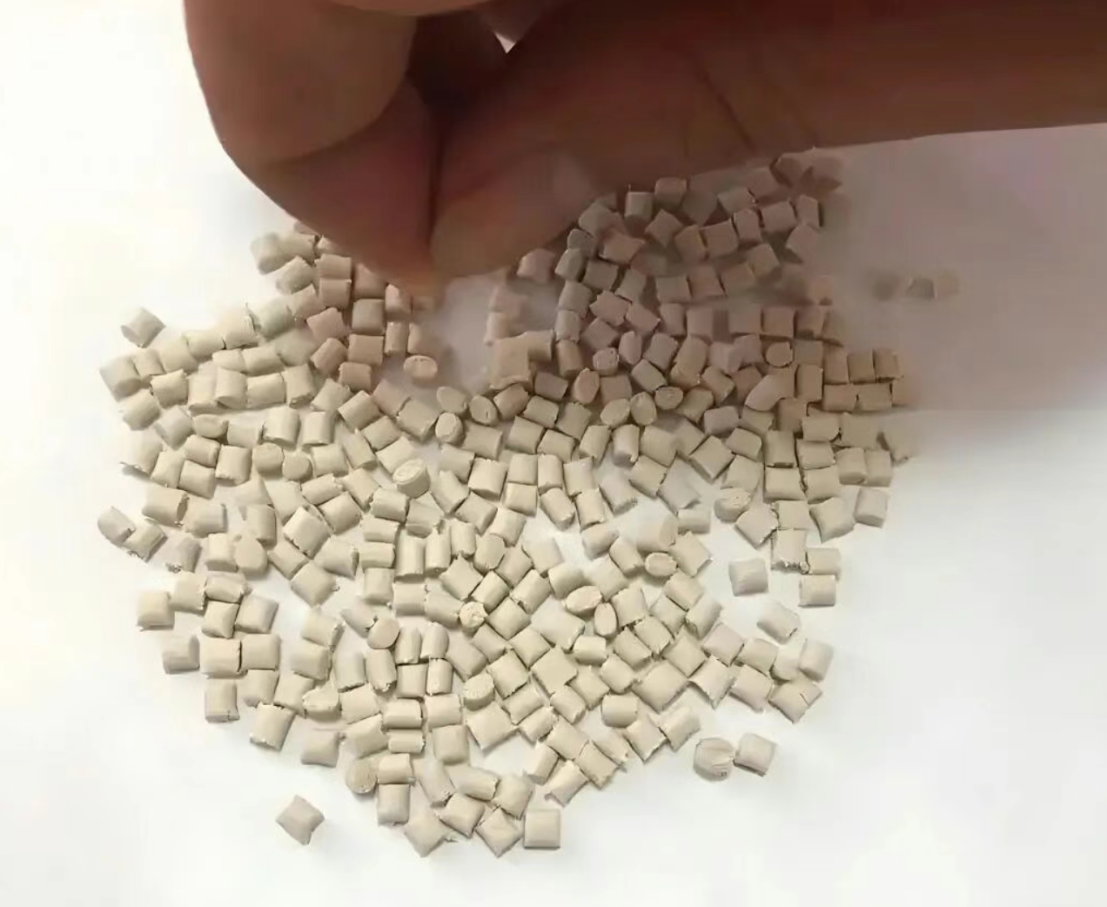Introduction to the Structure and Properties of Polyphenylene Sulfide (PPS)
The main molecular chain of polyphenylene sulfide consists of benzene rings and sulfur atoms arranged alternately. It has high chain regularity: the numerous benzene rings provide rigidity, while the abundant thioether bonds offer flexibility. Owing to the rigid-flexible balance of its main molecular chain, PPS is easy to crystallize, with a crystallinity up to 75% and a melting point of 285°C.
Polyphenylene sulfide is a white, hard yet brittle polymer. It has an extremely low moisture absorption rate of only 0.03%, excellent flame retardancy with an oxygen index as high as 44%, outstanding thermo-oxidative stability, and very good electrical insulation.
(1) Mechanical Properties
The mechanical properties of PPS are not high. Its tensile strength and flexural strength are at a moderate level, and its impact strength is quite low. Therefore, glass fibers, carbon fibers, and inorganic fillers are often used to improve its mechanical properties, while still maintaining its heat resistance, flame retardancy, chemical stability, and other characteristics.
PPS has high rigidity. The flexural modulus of unmodified PPS can reach 3.87 GPa, and it can be as high as 22 GPa when reinforced with carbon fibers. After reinforcement modification, PPS can maintain high mechanical properties, dimensional stability, and creep resistance under long-term load and thermal load. Thus, it can be used in high-temperature stress environments. In addition, filled and blended modified PPS can be made into self-lubricating materials with low friction coefficient and wear rate, as well as high temperature resistance.

(2) Thermal Properties
PPS has excellent thermal stability. Due to its high crystallinity, the decline of its mechanical properties with increasing temperature is small. The long-term service temperature of PPS can reach 240°C, and the short-term service temperature can reach 260°C. Its melting temperature is 285°C. It does not decompose at a high temperature of 500°C and only completely degrades in air at 700°C.
Because the molecular structure of PPS contains sulfur atoms, its flame retardancy is very prominent. It is a highly flame-retardant material without adding any flame retardants, and it will not lose its flame retardancy even after repeated processing. Table 3-14 shows the limiting oxygen indices of several common plastics.
(3) Electrical Properties
PPS has excellent electrical insulation. It has low dielectric constant and dielectric loss, and its surface resistivity and volume resistivity change little with temperature, humidity, and frequency. Moreover, it has good arc resistance, which is comparable to thermosetting plastics. Therefore, 30% of PPS is used in electrical insulation materials.
(4) Chemical Resistance
PPS has excellent chemical corrosion resistance. Except for being eroded by strong oxidizing acids (such as concentrated sulfuric acid, concentrated nitric acid, aqua regia, etc.), it is stable to most acids, alkalis, salts, esters, ketones, aldehydes, phenols, as well as aliphatic hydrocarbons, aromatic hydrocarbons, and chlorinated hydrocarbons. No known solvent can dissolve it below 205°C.
(5) Other Properties
PPS has good weather resistance. After 2000 hours of weathering, the rigidity of PPS reinforced with 40% glass fiber remains basically unchanged, and its tensile strength only decreases slightly.
PPS also has excellent radiation resistance. It is stable to ultraviolet rays and ⁶⁰Co rays, and does not decompose even under intense γ-ray and neutron ray radiation.
In addition, PPS has good adhesion to glass, ceramics, steel, aluminum, and other materials.
